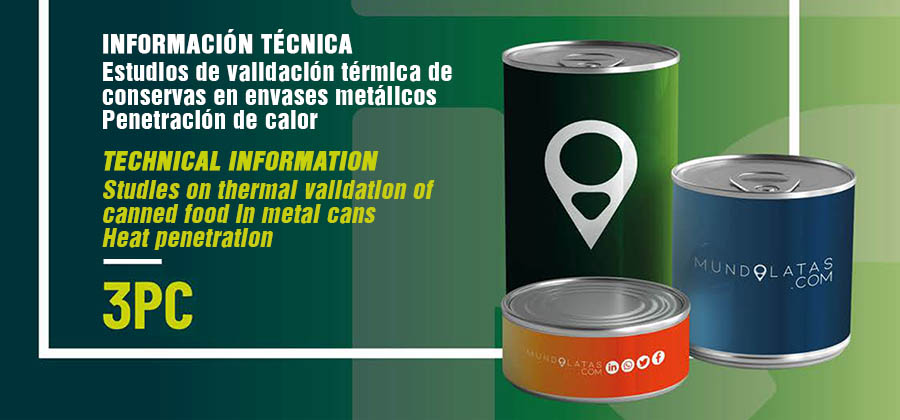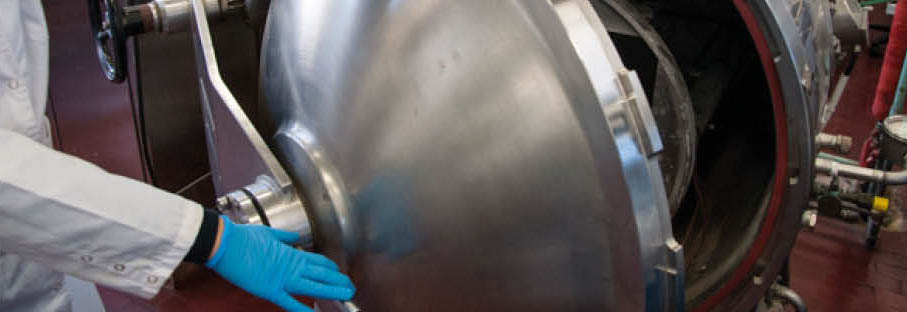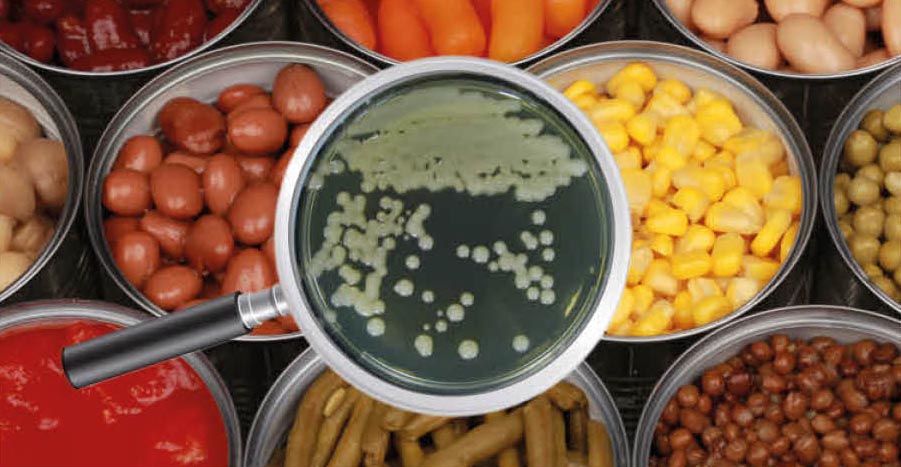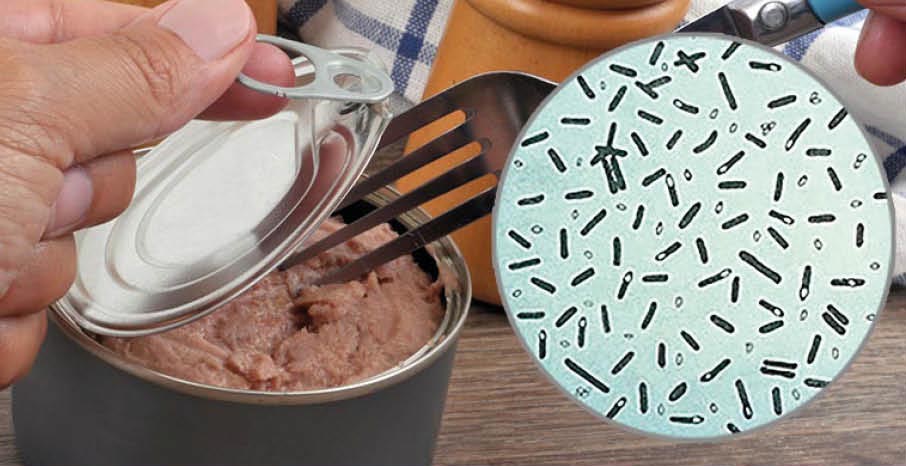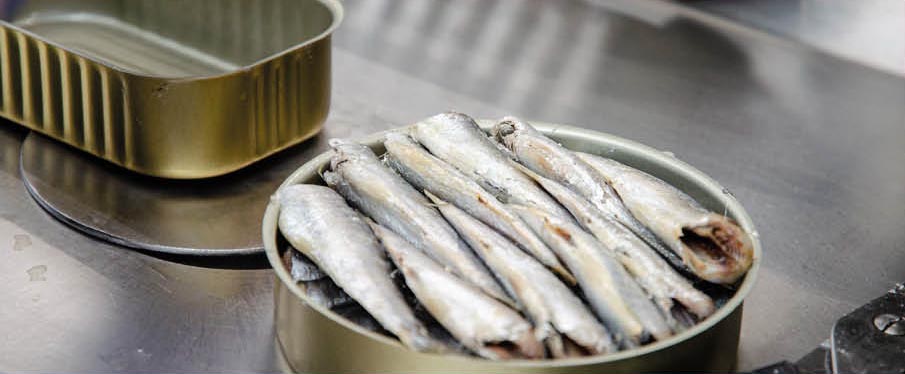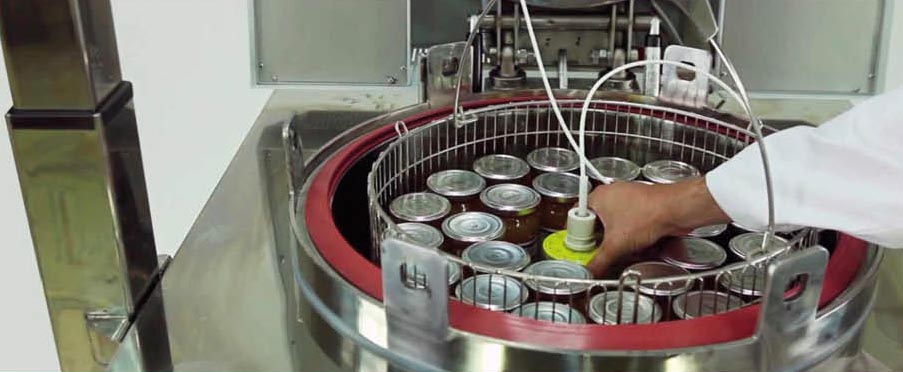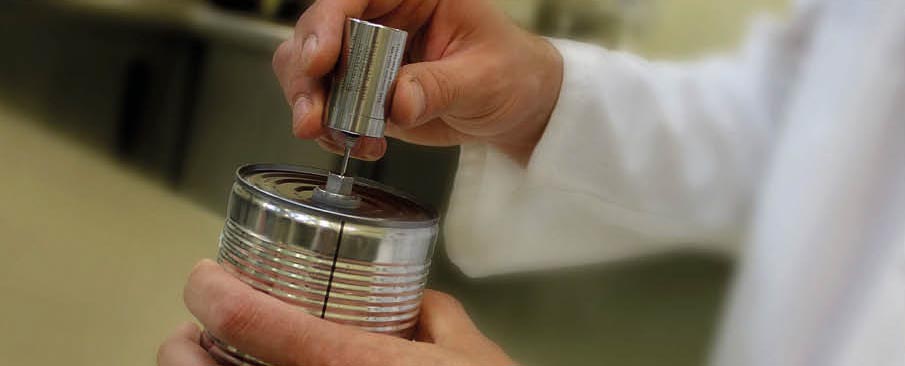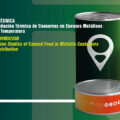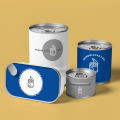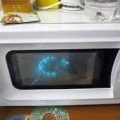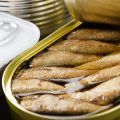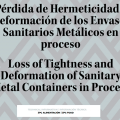As we mentioned in the previous publication, the thermal validation studies carried out in canning plants are mandatory and required in external audits carried out by some accreditations that promote food safety, such as BRC, IFS, HSEQ, FSSC 22000, etc., and are also requested by international health control authorities, including the Food and Drug Administration (FDA), European Food Safety Authority (EFSA), EU, UK, DIPOA, SENASA and others.
These studies are part of the verification process of the HACCP plan implemented in canning plants and guarantee that pasteurized or sterilized canned foods, especially low acid canned foods (LACF), such as meat, fish, seafood, asparagus, peas, beans, corn, figs, milk and others, with a final stabilized pH greater than 4.5, have satisfactorily completed their commercial sterility and there is no risk of the presence of Clostridium botulinum in the food, since this microorganism is the producer of the botulinum toxin that can cause the death of the consumer.
Thermal validation studies must be carried out by a Thermal Processes (TP) authority, which is a person or organization with in-depth knowledge of the requirements or demands for the thermal treatment of canned foods, so that they are totally harmless to the consumer, in addition to possessing the necessary equipment and experience to carry out this type of process determinations.
There are two main studies, the Heat Distribution study, which is performed on the heating equipment or sterilizers, which we developed in the previous publication of March 2022, and the Heat Penetration study, which is performed directly on the food, which is inside the hermetically sealed metal containers.
1. THE HEAT PENETRATION STUDY
It is a scientific method to determine the levels of commercial sterility or Fo that is reached.
in a canned food during the programmed heat treatment. This study is specific for each can size, according to the final stabilized pH of the food and designed to destroy a specific microorganism that can develop in that medium causing a foodborne illness (FBD), which infects, intoxicates, or worse, can cause the death of the consumer, with a serious consequence for public health.
Among the most common TSEs are botulism, gastroenteritis, listeriosis caused by Listeria monocytogenes, salmonellosis caused by Salmonella Sp, cholera, hepatitis, etc. Now taking into account that botulism is the most serious TSE that can occur in the industrial and artisanal production of canned food, in this article we will consider Clostridium botulinum (Cb) as a reference to define some concepts, such as D value, z value, minimum Fo, calculation methods, thermal destruction curves, data analysis, commercial sterility levels and other topics that will be discussed in due course.
2. HEAT TREATMENT OR PROGRAMMED PROCESS
The cans in the canning production process, after being filled with food, liquids, evacuated and sealed to achieve airtightness, are heated for a predetermined time and temperature, using some heating medium, which can be saturated steam under pressure, hot water, or a mixture of both, to achieve microbiological stability of the food or commercial sterility (FDA, USDA), which is defined as the condition achieved in a canned food by the application of heat to produce a product free of microorganisms capable of reproducing in the food under normal conditions of commercial storage and distribution without refrigeration.
The heat treatment of canned foods, depending on the temperature to which the heating medium is heated, can be defined as pasteurized (below 100 °C / 212 °F) or sterilized (above 100°C) and, because of the high risk of survival of pathogenic bacteria that can adversely affect the health of the consumer, it is considered a critical control point (CCP) in the HACCP plan of any canning plant.
It is still not known exactly why heat kills bacteria, for some the resistance of the bacteria is linked to the stability of heat-resistant enzymatic proteins associated with bacterial spores, but the most widespread opinion is that germs die by coagulation of their cellular proteins and indeed there is abundant data showing that the factors affecting protein coagulation exert a marked influence on the thermal resistance of bacteria and their spores.
The programmed or established process is designed by a PT authority, where it determines with heat penetration studies, the time and temperature parameters to which a canned food must be subjected to reach commercial sterility, it also establishes the initial temperature of the food before starting the process and some other critical factors.
3. THERMAL RESISTANCE OF MICROORGANISMS
Any temperature above the maximum ideal growth temperature of the microorganism is lethal. Vegetative forms of bacteria, yeasts and fungi are rapidly destroyed at 100 °C (212 °F) and normally pose no risk in the heat treatment of canned foods, but the spores of certain bacterial species are extremely heat-resistant and their destruction requires prolonged exposure to high temperatures. Therefore, the lethal conditions for a microorganism cannot only be expressed by saying that it dies at such temperature, but it is also necessary to indicate an effective maintenance time, defined as lethal exposure time.
The amount of heat required to destroy bacteria in a product can be calculated using different methods and the science that studies it is thermobacteriology, which considers in its evaluations, the growth characteristics of the microorganisms, the nature of the food in which the microorganisms are heated and the type of food in which the bacteria that have been thermally treated will be allowed to grow or metabolize.
A widely used method is the thermoresistometer, which consists of a device specifically designed to measure the heat necessary to destroy bacteria and their spores under conditions of high temperature and short time. Identical discs or containers are prepared with the same amount of food inoculated with a known load of the microorganism under study and are introduced into the steam chamber of the thermoresistometer, at the end of the heating time the discs are removed from the steam chamber to cool them and then the food is immediately deposited in tubes containing a bacteriological culture medium, incubated at the optimum temperature of the microorganism under study to evaluate its survival.
Another method to study microorganisms that produce gas, uses 208×006 cans to define thermal destruction times, also called TDT cans, the methodology is the same as the previous example, with the difference that at the end of the process, during incubation, the survival of the microorganism is evaluated when they produce gas by swelling the cans.
4. THE D, Z AND FO VALUES CONSIDERED FOR HEAT PENETRATION STUDIES
The information gathered in the thermal resistance studies of the microorganisms defines their D-value, Z-value and the Fo necessary to achieve commercial sterility of the food.
The D value is specific for each microorganism or spore. It establishes the time in minutes and at a constant temperature that a decimal reduction of the microbiological load in the food is achieved or, in other words, the time required to destroy 90% of the bacteria present at a temperature established in centigrade or Fahrenheit. The higher the D-value of a microorganism at a given temperature, the higher its thermoresistance, for example at 121.1 °C (250 °F) the D-value of the mesophilic C. botulinum is 0.21 minutes and at the same temperature the thermophilic B. Stearothermophilus has a D-value equal to 5 minutes.
The Z-value is the number of degrees Celsius or Fahrenheit required for the thermal destruction time curve to traverse a logarithmic cycle and serves to determine at the same curve, with which other temperature we can obtain the same lethal effect for the microorganism under study. The Z-value of Cb is every 10 °C or its equivalent in every 18 °F.
The F-value is the time in minutes required to destroy a defined number of microorganisms at a set temperature. Its general formula is F = D (log a – log b), where D is the resistance of the referential microorganism to be destroyed, log a is the initial load of this microorganism and lob b is the final load. With the formula it is concluded that the Fo should be higher if the bacteria are more heat resistant and also if the initial load of microorganisms in the food is higher, to handle the latter the sanitation standard operating procedures (SSOP) must be well implemented in the canning plant. The minimum Fo value for Cb, to obtain 12 decimal reductions, is 2.52 minutes, but in the industry values of 4 and even 6 or more are used in the case of tropical preserves.
Now the methods of lethality calculation that are mostly used in heat penetration studies for food preserves are two, Ball’s formula or the mathematical method that gives the possibility of calculating alternate processes at other temperatures of the programmed thermal process and the general method described by Bigelow that considers the entire heating curve as well as the cooling curve for the calculation of lethality for the referential microorganism. Personally, I consider that the biological contribution of the food must be taken care of, avoiding the denaturation of proteins, vitamins and other nutrients, for this reason I prefer to use Bigelow’s general method for the calculation of lethality or Fo in canned foods.
5. PERFORMANCE OF THE HEAT PENETRATION STUDY
It is preferable to use the commercial preparation of the product at the cannery for heat penetration testing, however laboratory prepared products can be used for testing, ensuring that the product is prepared in the worst reasonable worst case conditions. Such as increasing the starch concentration to create a more viscous product, increasing the particle size of the food, increasing the packed weights, in products that use a mixture of water and oil, using only oil, since fatty substances increase the heat resistance of the spores, all these considerations help to compensate for unexpected variations that may occur in ordinary production.
T-type thermocouples are usually the temperature sensors of choice for the studies, they are calibrated as discussed in the previous publication and are usually mounted on the sides of the cans, the point of the thermocouple that will record the temperature of the food will be located at the coldest point or in the area where the heating is slowest. In canned foods filled with solid or very viscous foods, heat transmission is by conduction and the coldest point is generally the geometric center of the container or the largest food particle. In the case of canned foods filled with soups, vegetables with brine or where the percentage of liquids is high, then heat transmission is by convection and the cold point is generally located between the geometric center of the container and the bottom. It is important to note that convection-heated canned foods can be heated more rapidly and thus shorten the processing time, when they promote forced convection by shaking or rotating the container during the programmed thermal process.
Each thermocouple should be identified with a particular channel number in the recorder and should correspond to the same number of the sensor placed inside each can, this should be documented in the probe location record for subsequent analysis, at least one temperature sensor should be located in the thermometer bulb of the autoclave. The number of cans to be used should be defined by the PT authority, as well as the orientation and position of the container, the use of dividing sheets, initial product temperature, temperature and autoclave rise time. The study should continue until the coldest can reaches 2.77 °C (5 °F) of autoclave temperature in conduction heating or within 1.11 °C (2°F) of autoclave temperature for all other products.
6. PRESENTATION OF THE STUDY WITH DATA ANALYSIS
The heat penetration study is presented in a written report which should record: identification of the canning plant, day of the test, identification of the study, individual conducting the test, description of the autoclave, container size, product processed, possibility of nesting cans or nesting, weights packed, graph with the location of the probes, initial temperature, time and temperature of the process, temperature report with calculation of Fo for each thermocouple, definition of the minimum Fo obtained, presentation of the lethality curve and other information or critical factors considered by the PT authority.
Presenting the thermal death time curve of the referential or lethality microorganism (Thermal Death Time Curve) is of utmost importance, since it irrefutably demonstrates that the Fo or Po found satisfactorily complies with the decimal reduction of the target microorganism, therefore the canned product evaluated is commercially sterile.
The lowest temperature or minimum Fo obtained on a thermocouple located at the cold point of any of the canned products evaluated is usually used to establish the lethality achieved in thermal processes. For low-acid foods (LACF) the minimum Fo obtained should be between 4 and 6 for C. botulinum, i.e. heating the food at 121.1 °C (250 °F) for 6 minutes.

